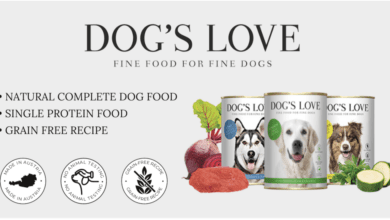Tail wagging the dog? Time for a wider perspective on data
By Fran Quilty, CEO and co-founder, Conjura

In my earlier article, I looked at how the retail and service sectors are restructuring to meet the changing needs of younger consumers – and pet care is not exempt. Digital native businesses, such as Tails.com and others have been capitalising on Millennials’ digital-first shopping habits for some time. The question is how do businesses continue to grow as they move beyond start-up mode?
The answer is still data, but it means using it in a slightly different way. Early-stage businesses use – or should use – their daily reporting to understand current customer and stock trends.
Used effectively, this reactive data will drive competitive strategies by understanding what has already happened. However, it can’t inform proactive strategies for long-term growth built on assumptions about what should or will happen. This is where data science comes in.
When you have enough historical data, it becomes possible to analyse behavioural trends over time and extrapolate how these will inform future scenarios and plan accordingly. While this might sound logical, it’s not always that simple in practice and businesses can end up overwhelmed by the data and underwhelmed by the results.
This typically comes down to one of two issues; either that the business has made the leap into data science too early, or it simply misunderstands what sort of questions data science can answer.
So, before making any investment in data science, assess whether you have the elements in place to make it work:
Do you have enough (usable) historical data?
It isn’t possible to plan effectively without context and a data science model needs enough ‘good’ data to equate inputs with outcomes to make accurate predictions.
This means data must be harvested during ‘normal’ trading conditions, consequently any data from the past year and a half would have to be categorised as anomalous given the disruption of the pandemic.
Even if the data looks good on paper, it is still worth checking how it was gathered. Some CRM systems are configured just to provide point-in-time data and any old data is overwritten. It can be a similar story with stock tracking systems so be sure it’s possible to distinguish between ‘no stock’ versus ‘no demand’ for stock within any given timeframe.
Is the data you hold comparable?
Data that’s held in different systems internally or in the cloud is often proprietary and/or incompatible. This can make it nigh-on impossible to join the dots to tell the full story of a customer journey across multiple touchpoints from a marketing message to point-of-sale.
Making sense of the data therefore means pooling all these data sources into a centralised warehouse where it will be ‘cleaned’ into a standard format as a single point of truth.
Most importantly, a common identifier can then be assigned to each customer, and potentially their pet(s). Some ecommerce vendors such as Itch. ask for the pet’s age and breed when customers sign up. This provides an accurate view of engagement and allows the business to tailor value-added services and offers – insurance, supplements etc. – in line with the needs of the pet at different stages in its life.
Are you asking the right questions?
Data science has to be grounded in strategic thinking, a spray and pray strategy is no strategy at all.
Start with business-wide goals and then narrow these down to measurable questions at a departmental level, which can be scaled by asking the right follow-ups. For instance, you might want to know which customers offer the highest lifetime value, what marketing channels bring them in, what offers/services they respond to best, what factors lead to churn etc?
It’s this level of insight over time that reveals the path to growth, allowing you to build strategies for new products and services, new geographies for expansion, even new business models can all informed by predictive modelling.
Do you have the right people?
Take it from us, data scientists are a very particular breed – the sort of people that get excited by phrases like ‘data drift’ and ‘false positives.’ We love it but – honestly – It’s not for everyone. Data science takes a certain level of patience, attention to detail and old-fashioned coding skills.
It’s simply not fair to hand it over to the IT or marketing team, they are unlikely to have the specialist expertise required to extract the true potential of data. To be perfectly honest, they probably won’t do it justice and it’s even less likely they’ll enjoy trying.
So, getting data science right means investing in both the tools and the people to do it right.
Do you have a data culture?
Hiring data scientists doesn’t immediately equate to a data culture though. A shared data source brings full transparency and while this is a long-term benefit, sometimes people are unwilling to embrace it initially.
A single business may run the gamut of those that love data, those that fear it because they don’t understand it and others that think it should all belong to them. If you thought data signals an end to departmental politics, then think again!
So, while a business itself might be ready for data science, there’s no saying all its staff are. Until someone tells them to be. Benign dictatorships are sometimes a pre-requisite. Data culture has to be led from the top and without strong leadership, all the hard work can come to nothing.
The digitalisation of the pet care sector may still be in relatively early stages but businesses all need to catch up fast. While early movers can still gain a competitive advantage by transitioning to a data-informed model, a reactive strategy will only get them so far. As the digital market becomes ever-more competitive, lasting growth will be the preserve of those able to pinpoint where the real opportunities lie.
By Fran Quilty, CEO and co-founder, Conjura













